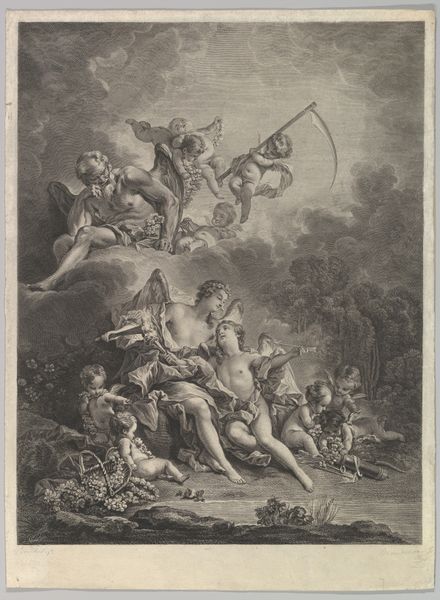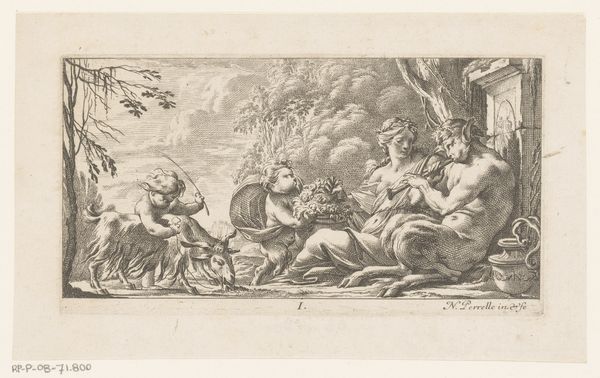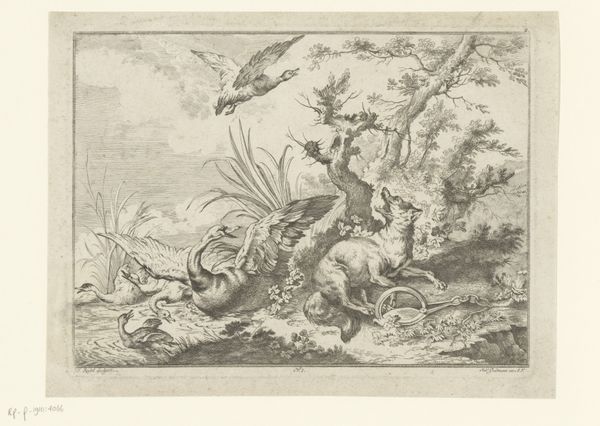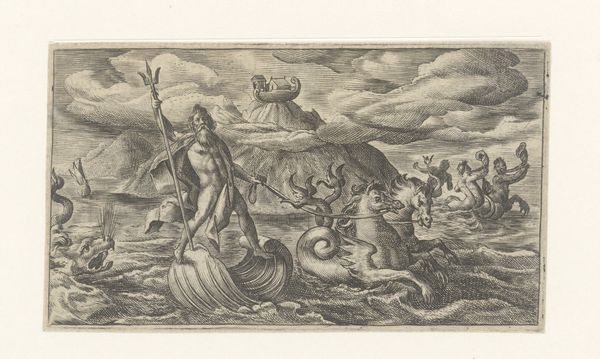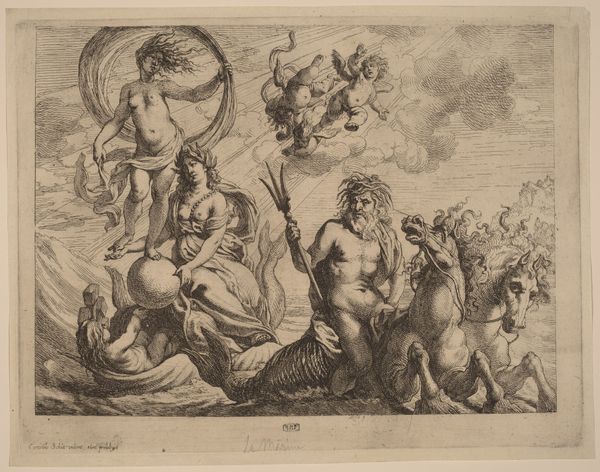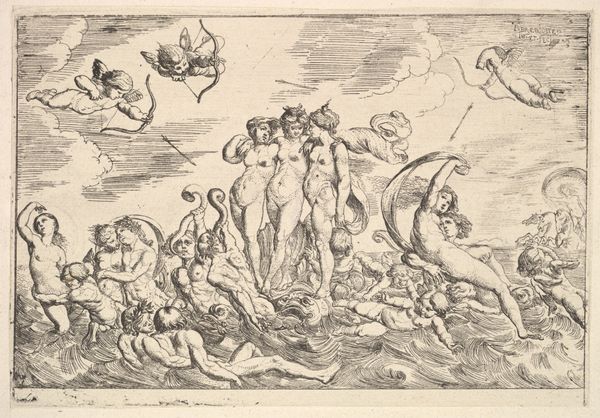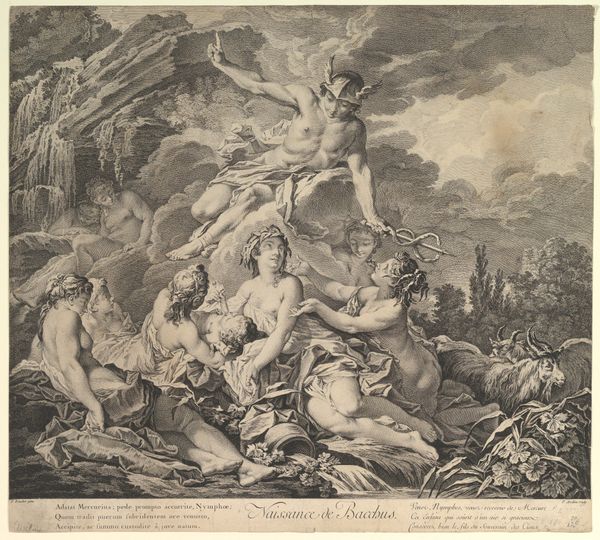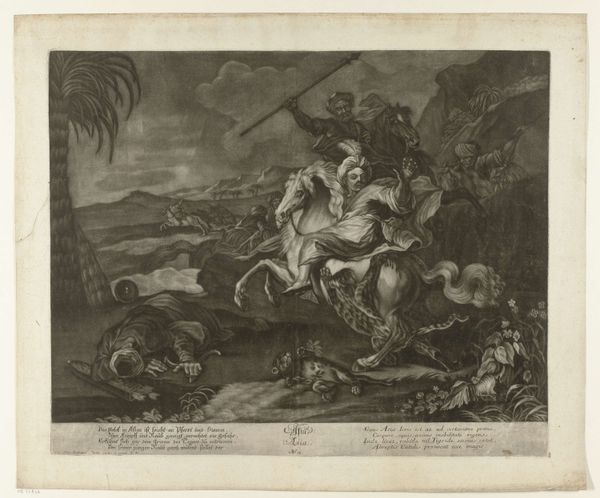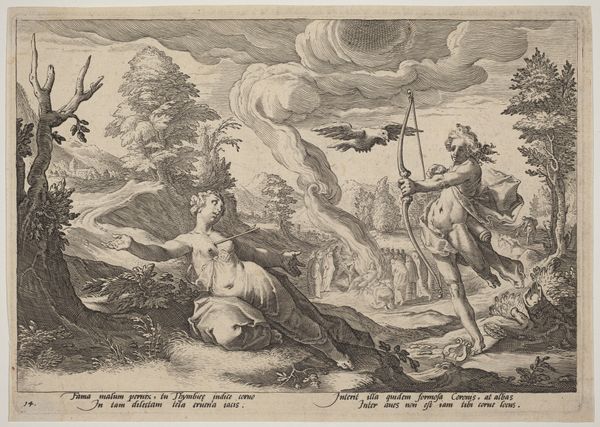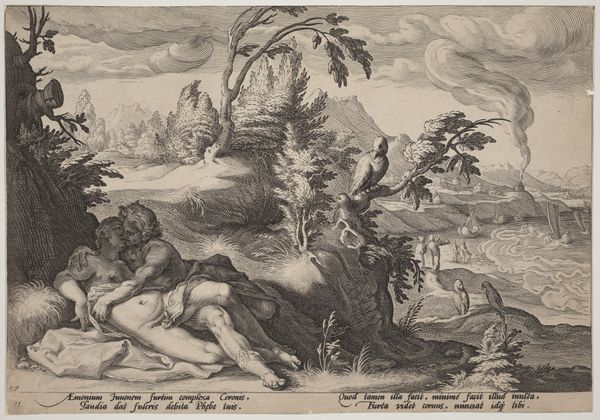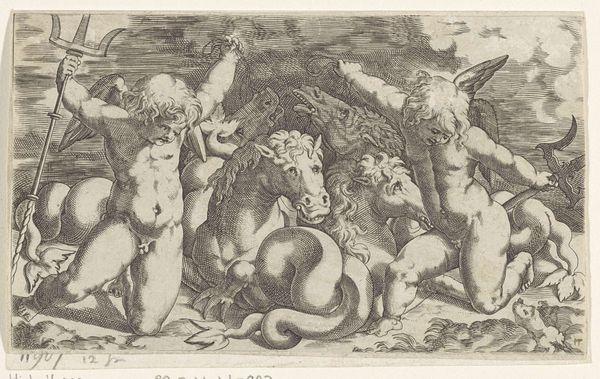
engraving
#
allegory
#
baroque
#
figuration
#
history-painting
#
engraving
Dimensions: height 174 mm, width 222 mm
Copyright: Rijks Museum: Open Domain
Philip van Gunst's engraving, "Neptune Commands the Flood," presents a dynamic scene dominated by the god Neptune, who is central to the composition and riding a carriage in the middle of turbulent waters. The arrangement of figures and the use of linear hatching define the forms. The figures are tightly packed, creating a sense of movement and chaos. Neptune, with his trident, is depicted in a classical style, yet the surrounding figures and sea monsters introduce elements of the grotesque. The texture is achieved through the density and direction of the engraving lines, which vary to suggest light and shadow. This contrast creates a sense of depth and drama, heightening the emotional intensity of the scene. The work's structure invites a semiotic interpretation. Neptune can be viewed as a signifier of power and order. In contrast, the flood represents chaos and the untamed forces of nature. This tension reflects a broader cultural discourse about humanity's relationship with the natural world and the attempt to impose order on what is inherently chaotic. Ultimately, it is through this formal complexity that the engraving transcends mere illustration, becoming a powerful statement about control, chaos, and the human condition.
Comments
No comments
Be the first to comment and join the conversation on the ultimate creative platform.
